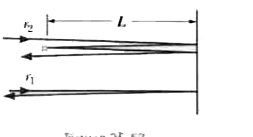
In Figure, a light wave along ray r1 reflects once from a mirror and a light wave along ray r2 reflects twice from that same mirror and once from a tiny mirror at distance L from the bigger mirror. (Neglect the slight tilt of the rays.) The waves have wavelength 350 nm and are initially in phase. (a)What is the smallest value of L that puts the final light waves exactly out of phase? (b) With the tiny mirror initially at that value of L, how far must it be moved away from the bigger mirror to again put the final waves out of phase?
(a) 87.5 nm, (b) 175 nm
Topper's Solved these Questions
- INTERFERENCE AND DIFFRACTION BOOK - RESNICK AND HALLIDAYCHAPTER - INTERFERENCE AND DIFFRACTION EXERCISE - PRACTICE QUESTIONS (Single Correct Choice Type)
66 Videos
- INTERFERENCE AND DIFFRACTION BOOK - RESNICK AND HALLIDAYCHAPTER - INTERFERENCE AND DIFFRACTION EXERCISE - PRACTICE QUESTIONS (More than One Correct Choice Type)
23 Videos
- INTERFERENCE AND DIFFRACTION BOOK - RESNICK AND HALLIDAYCHAPTER - INTERFERENCE AND DIFFRACTION EXERCISE - CHECKPOINT
6 Videos
- HYDROGEN ATOMBOOK - RESNICK AND HALLIDAYCHAPTER - HYDROGEN ATOMEXERCISE - PRACTICE QUESTIONS(Integer Type)
6 Videos
- MAGNETIC FIELDS DUE TO CURRENTSBOOK - RESNICK AND HALLIDAYCHAPTER - MAGNETIC FIELDS DUE TO CURRENTSEXERCISE - Practice Question (Integer Type)
4 Videos
Similar Questions
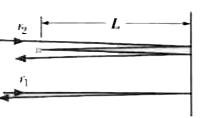
In Figure, a light wave along ray r1 reflects once from a mirror and a light wave along ray r2 reflects twice from that same mirror and once from a tiny mirror at distance L from the bigger mirror. (Neglect the slight tilt of the rays.) The waves have wavelength λ and are initially exactly out of phase. What are the (a) smallest. (b) second smallest, and (c) fourth smallest values of L/λ that result in the final waves being exactly in phase?
View SolutionIn Figure, two light rays go through different paths by reflecting from the various flat surfaces shown. The light waves have a wavelength of 411.0 nm and are initially in phase. What are the (a) smallest and (b) second smallest value of distance L that will put the waves exactly out of phase as they emerge from the region?
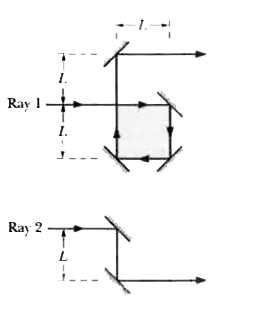
View Solution
Knowledge Check
A ray of light after reflection from a mirror is known as
Areflected rayBnormalCincident rayDrefracted rayIf a light ray is reflected from a mirror as shown in the figure, then
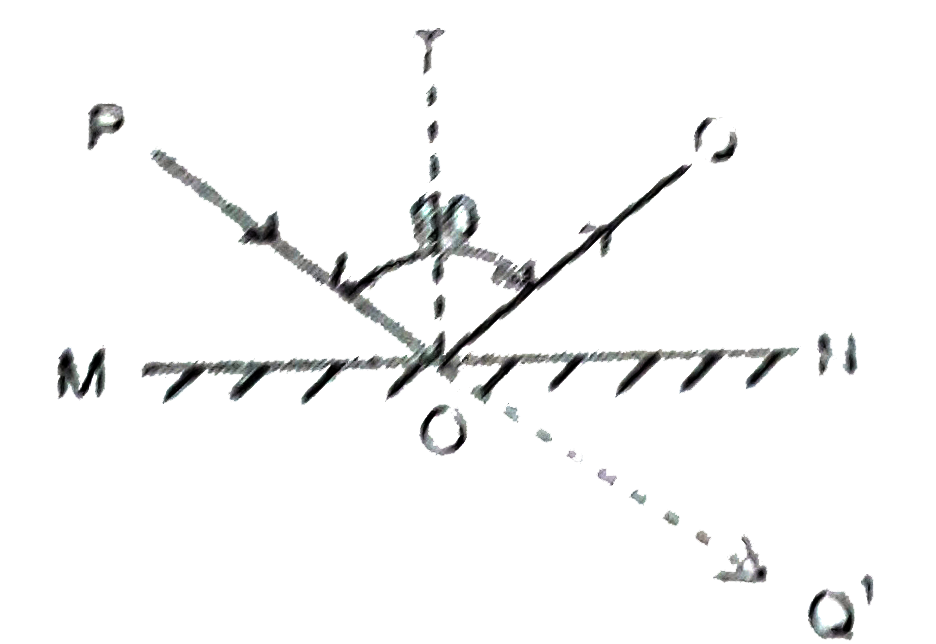 Athe glancing angle of light ray is 45∘Bthe reflected light ray is perpendicular to the incident light ray.Cthe reflected light is deviated through an angle of 90∘DAll of the above
Athe glancing angle of light ray is 45∘Bthe reflected light ray is perpendicular to the incident light ray.Cthe reflected light is deviated through an angle of 90∘DAll of the aboveIf a light ray is reflected from a mirror as shown in the figure, then
 Athe glancing angle of light ray is 45∘Bthe reflected light ray is perpendicular to the incident light ray.Cthe incident ray is deviated through an angle of 90∘DAll of the above
Athe glancing angle of light ray is 45∘Bthe reflected light ray is perpendicular to the incident light ray.Cthe incident ray is deviated through an angle of 90∘DAll of the above
In Figure A, draw the reflected ray from the mirror and refracted ray into the air.

View SolutionWrite the value of angle of reflection for a ray of light falling normally on a mirror.
View SolutionA ray of light incident on the first mirror and parallel to the second mirror in reflected from the second mirror parallel to the first mirror .The angle between the two mirrors is
View SolutionA light ray from an object 'P' is reflected from a mirror as shown in the figure, then
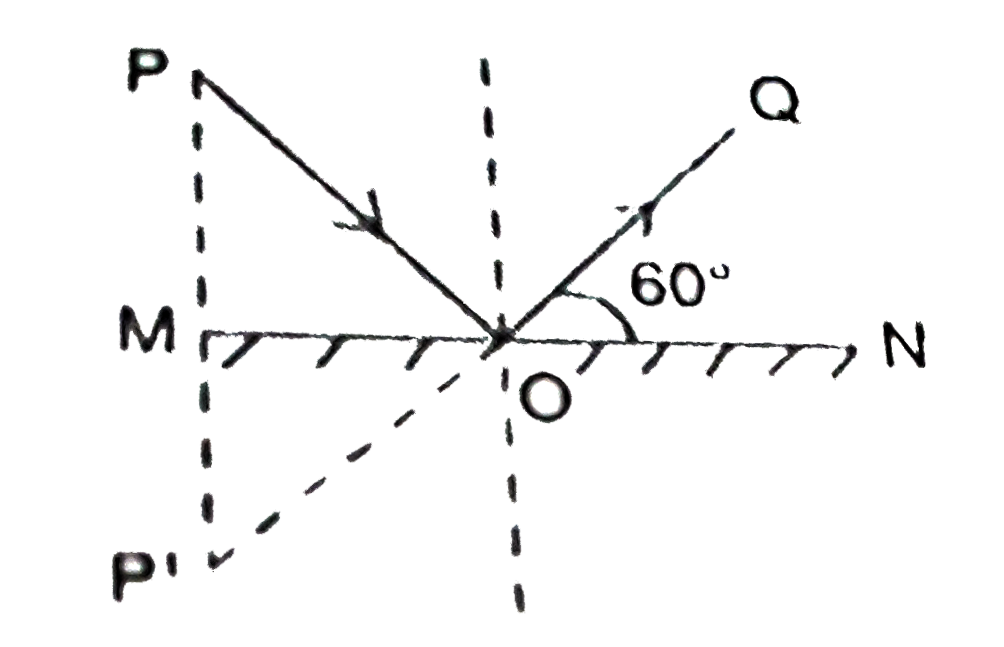
View SolutionA light ray from an object 'P' is reflected from a mirror as shown in the figure, then

View Solution
